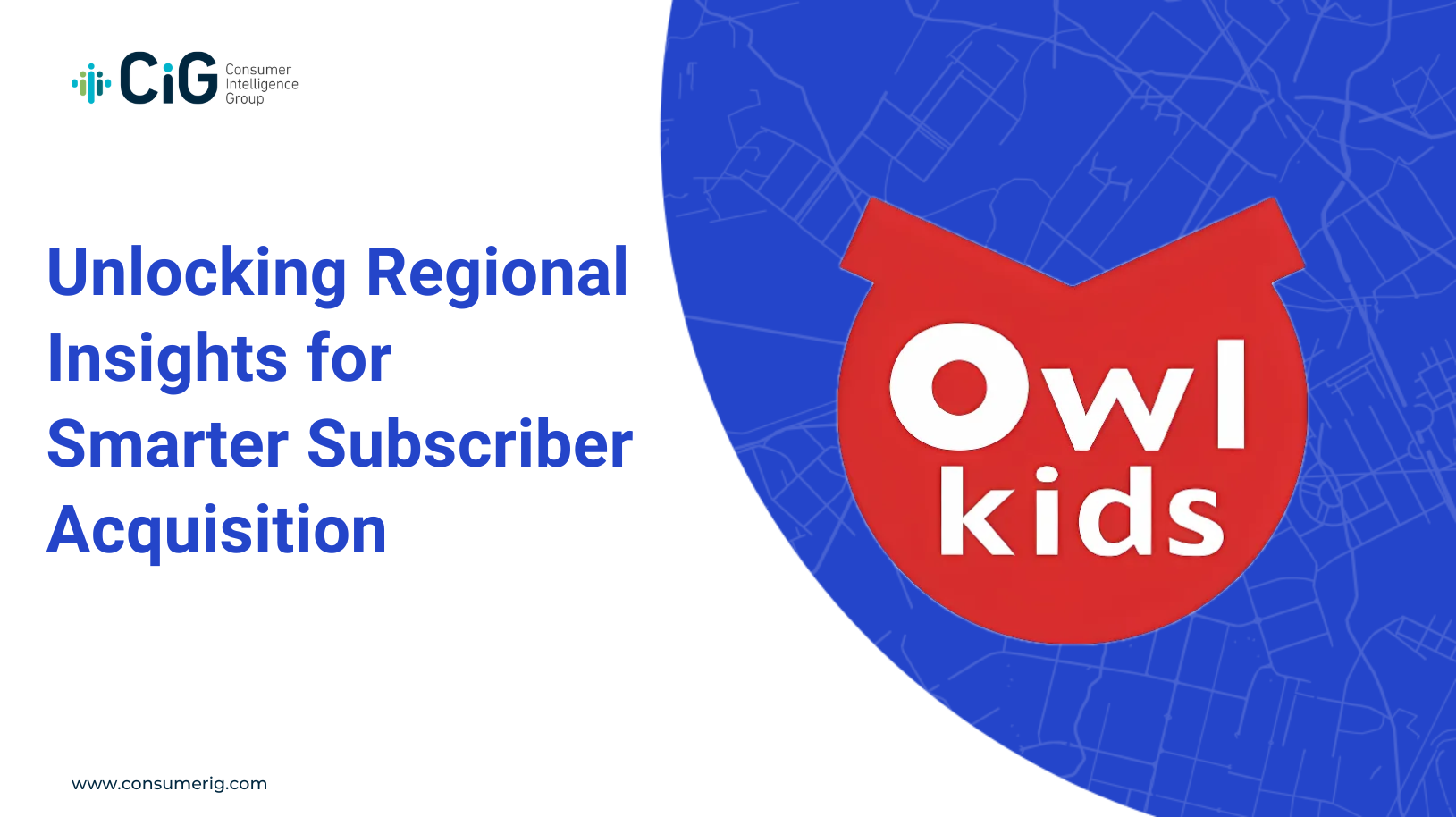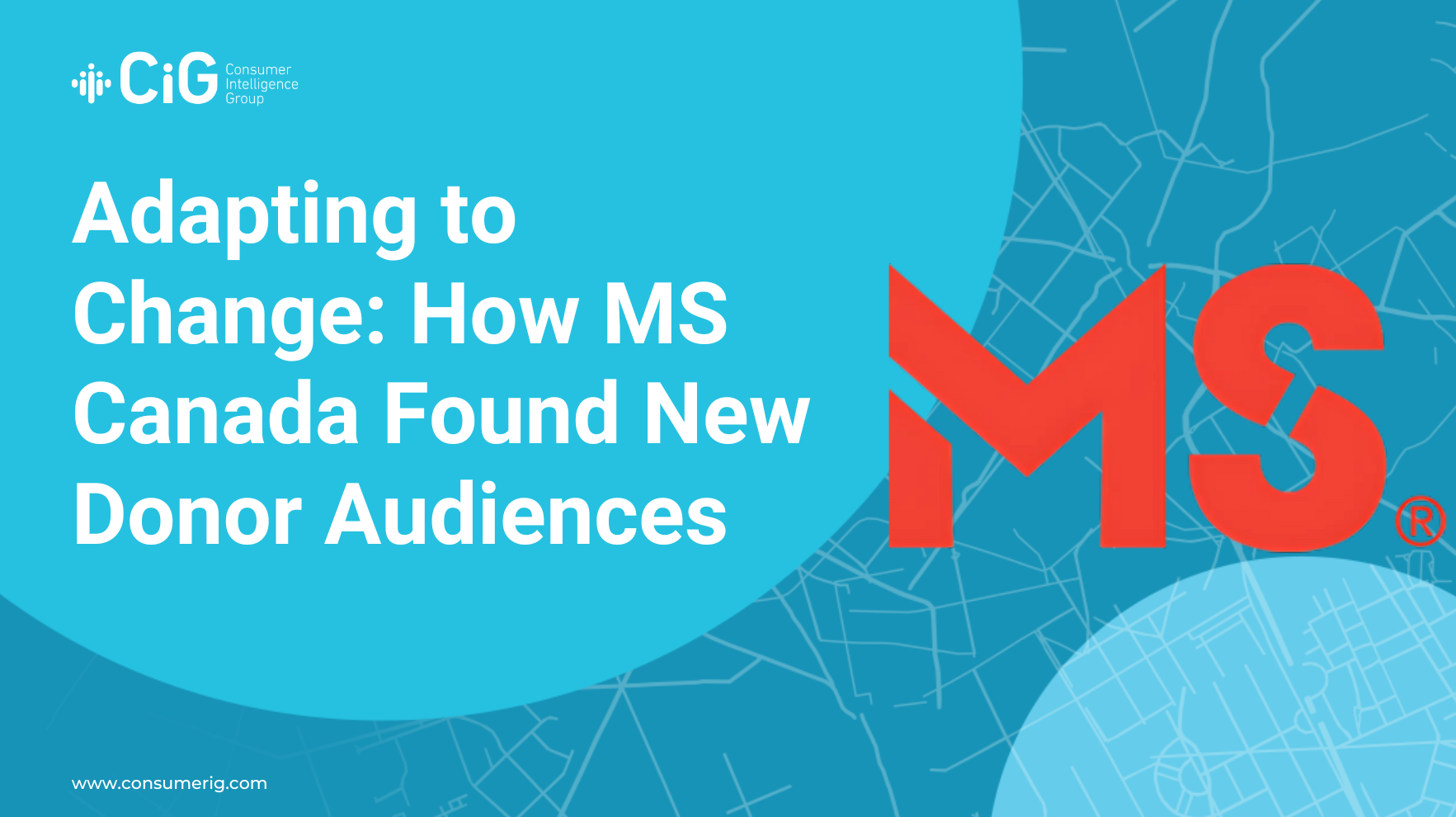What if you could reach customers at the exact moment they’re ready to buy instead of hoping that someday, maybe, they might be interested?
Here’s an example.
Sarah just listed her home for sale. Within 48 hours, she receives offers from local moving companies, her Facebook feed shows ads for home security systems, and her inbox contains promotions from internet providers asking her to “take us with you to your new home.”
Meanwhile, David isn’t moving anywhere, yet he sees those same security and internet ads because he fits their “homeowner, aged 35-50” demographic profile, despite having zero interest in changing his internet or home security system.
This is the power of trigger marketing.
While Sarah receives timely, relevant messages during a major life change when she actually needs these services, David represents wasted ad spend—part of the millions of Canadians who see irrelevant ads simply because they match broad demographic criteria.
For Canadian marketers, this scenario plays out daily across every industry. The question isn’t whether your audience might be interested in your product someday; it’s identifying the exact moment they’re actively ready to buy. Trigger marketing data helps you reach prospects like Sarah when your personalized messages matter most.
What is Trigger Marketing?
Trigger marketing is a targeting technique that allows marketers to reach prospects at crucial moments when they’re actively considering a purchase or experiencing a life change that creates immediate buying intent. Rather than targeting broad audiences based on static characteristics, trigger marketing identifies specific events, behaviours, or circumstances that indicate someone is likely “in the market” for your product or service.
The power of trigger marketing lies in its focus on timing. When someone is moving homes, starting university, or visiting a competitor’s location, they experience moments of heightened purchase consideration. These event-based triggers create windows of opportunity where your marketing efforts are most likely to resonate and drive action.
Unlike broad-based marketing that attempts to create demand, trigger marketing capitalizes on existing demand by identifying when that demand is most likely to occur. This approach transforms marketing from a game of chance into a strategic, data-driven process that focuses resources where they’re most likely to generate returns.
Trigger Marketing vs. Segmentation
While both trigger marketing and traditional segmentation aim to improve targeting precision, they operate on fundamentally different principles and timeframes.
Traditional segmentation divides your audience into static groups based on demographics, psychographics, or past behaviours. These segments might include “affluent families,” “young professionals,” or “outdoor enthusiasts.” While valuable for understanding your customer base, these segments remain relatively stable over time and don’t account for immediate purchase intent or timing.
Trigger marketing, by contrast, focuses on dynamic events and signals that indicate immediate or near-term buying interest. Rather than targeting someone because they fit a particular demographic profile, trigger marketing targets them because they’re experiencing a specific event that makes them likely to purchase soon.
For example, traditional segmentation might target “homeowners aged 35-55 with household incomes above $75,000” for a home security system. Trigger marketing would target “households with homes currently listed for sale”—regardless of age or income because moving creates an immediate need for security solutions.
The key difference is urgency and intent. Segmentation helps you understand who might buy; trigger marketing helps you identify when they’re most likely to buy.
What are the Benefits of Trigger Marketing?
Implementing a trigger-based marketing strategy delivers measurable advantages for Canadian marketers across multiple dimensions.
Increased Efficiency and Better ROI
By starting with audiences that demonstrate actual purchase intent rather than broad demographic characteristics, trigger marketing significantly reduces wasted impressions. Instead of targeting millions of people who might be interested, you’re targeting thousands who are actively in market. When your campaigns focus on high-intent prospects, every dollar works harder, improving overall campaign efficiency and return on investment.
Higher Conversion Rates
Timing is everything in marketing. When you reach someone who’s already considering a purchase, whether they’re moving, starting university, or nearing the end of a car lease, your messages resonate more strongly and drive higher conversion rates.
Enhanced Personalization Opportunities
Trigger events provide a natural context for personalized messaging. For example, a pre-mover campaign can focus on “settling into your new home,” while targeting someone with an expiring car lease allows for “time to upgrade” messaging that feels relevant and timely.
Types of Marketing Triggers
An effective trigger marketing campaign leverages several types of triggers, each providing different insights into purchase intent and timing.
Life Event Triggers
Life event triggers are perhaps the most powerful type of trigger marketing data because they represent major changes that create immediate purchase needs.
Moving and Relocation
Moving represents one of the strongest triggers across multiple industries. When someone moves, they often need new home insurance, security systems, internet services, furniture, home improvements, and local services. Pre-mover data, which identifies households that have listed their homes for sale, allows marketers to reach prospects before, during, and after the moving process.
New to Canada
Newcomers to Canada represent a unique opportunity for brands looking to establish relationships with long-term, loyal customers, such as banking, insurance coverage, telecommunications, and countless other products and services. Because they haven’t yet developed brand loyalties, they represent particularly valuable acquisition targets.
Vehicle Financing Expiration
When car loans or leases are nearing expiration, it indicates potential interest in new vehicle purchases. This data proves valuable for automotive marketers, insurance companies, financing providers, and related services.
Student Data
Students and new-to-credit individuals represent future high-value customers for financial services companies. These audiences often establish their first credit relationships and choose services they may use for decades.
Location-Based Triggers
These triggers are based on physical behaviour like visiting competitor stores, automotive dealerships, or retail locations.
Competitor Location Visits
When someone visits a competitor’s store, automotive dealership, or retail location, it indicates active shopping behaviour. For example, someone who visits multiple car dealerships within a short timeframe is clearly in the market for a vehicle. Marketers can use these location-based signals to deliver competitive offers or complementary services within days of the triggering visit.
Event Attendance
Location-based triggers also include attending specific events that indicate interest or affinity. For instance, people who attend charity walks or runs demonstrate a propensity to support charitable causes, making them valuable prospects for non-profit organizations. Similarly, attendance at sporting events can reveal fan loyalty and engagement that brands can leverage. Fast food chains often capitalize on this by targeting fans who attended games with victory promotions (“Your team won – get 20% off!”) or game-day offers.
Customer vs. Prospecting-Based Trigger Marketing
To implement effective strategies, it’s crucial to understand the distinction between customer-based and prospecting-based trigger marketing.
Customer-based trigger marketing uses internal data to identify when existing customers might be ready for additional products or services. For example, a bank might use mortgage applications as triggers to offer credit cards or identify customers at risk of churn based on account behaviour. These strategies rely on proprietary customer data and internal analytics platforms.
Prospecting-based trigger marketing, by contrast, focuses on identifying potential customers who don’t yet have brand loyalty. This approach uses external data sources to identify households or individuals experiencing trigger events that make them good prospects for acquisition.
Most Canadian businesses need both approaches, but prospecting-based trigger marketing often presents the greater challenge because it requires access to external data sources and the ability to activate campaigns across multiple communication channels where prospects can be reached.
The Problems With Using Walled Gardens for Prospecting-Based Trigger Marketing
While platforms like Google and Facebook offer targeting options, relying solely on these walled gardens for trigger-based prospecting creates several significant challenges.
Algorithm Bias and Inflated Audience Sizes
Each marketing platform uses its own algorithms to interpret user signals and identify audiences. These algorithms interpret user behaviours and online activity to predict purchase intent, but the same behaviours can indicate different intentions depending on the context, leading to inaccurate audience identification.
Here’s how this plays out in practice: Facebook’s algorithm identifies “moving” audiences by analyzing user behaviours like searching for real estate content, engaging with moving-related posts, or visiting home improvement websites. The algorithm then groups anyone showing these behavioural patterns into a “likely to move” audience.
Consider this real-world example: A major Canadian telecommunications company compared Facebook’s algorithm-generated “moving” audience with intelligentVIEW’s pre-mover data. Facebook suggested an audience of 1 to 2 million Canadians showed “moving signals,” while intelligentVIEW’s data, based on actual real estate listings, delivered a considerably smaller, more targeted audience of fifty or sixty thousand per month.
In reality, millions of people don’t actually move simultaneously in Canada. The accurate number of households actively moving is in the hundreds of thousands, not millions. Facebook’s inflated audience included people who might have browsed real estate content out of curiosity, researched home improvement projects for their current home, or exhibited other behaviours the algorithm associated with moving, but weren’t actually in the process of relocating.
Limited to Single Platform Ecosystems
Platform-based targeting typically works only within that specific platform’s ecosystem, creating significant limitations for marketers who want to reach prospects across multiple channels.
When you build a “moving” audience on Facebook, that audience exists only within Facebook’s advertising platform. You can’t take those same households and target them through direct mail, Google Ads, traditional media, or retail media networks. This forces marketers to either limit their campaigns to single channels or attempt to recreate similar audiences on each platform separately, often with inconsistent results.
This ecosystem limitation becomes particularly problematic for omnichannel campaigns. If someone sees your moving-related ad on Facebook but doesn’t convert immediately, you can’t follow up with direct mail to their new address or target them with connected TV ads using the same precise audience data. Each platform operates in isolation, preventing the kind of coordinated, multi-touchpoint campaigns that often drive the strongest results.
For Canadian marketers who want to reach prospects through the channels where they’re most likely to engage—whether that’s social media, direct mail, radio, or outdoor advertising—platform-specific audiences create unnecessary barriers and force compromises that limit campaign effectiveness.
A Better Solution: intelligentVIEW’s Trigger Marketing Data
intelligentVIEW addresses the limitations of walled garden trigger marketing through a fundamentally different approach that prioritizes accuracy, privacy compliance, and omnichannel activation.
Household-Level Targeting
Rather than tracking individual digital behaviours, intelligentVIEW uses the household as the common identifier. This approach provides several advantages:
Privacy Compliance
Household-level targeting naturally aligns with Canadian privacy regulations while avoiding the risks associated with individual tracking and cookie-based identification.
Higher Accuracy
Households provide a stable, persistent identifier that doesn’t rely on device tracking or algorithmic interpretation of online behaviour.
Omnichannel Consistency
Because households can be reached through multiple channels—digital advertising, direct mail, traditional media—campaigns can maintain consistent targeting across all touchpoints.
Third-Party Data Sources for Higher Accuracy
intelligentVIEW’s trigger data comes from verified third-party sources rather than algorithmic interpretation of platform signals:
Pre-mover Data
Sourced from real estate listing information, updated bi-weekly to identify households that have listed their homes for sale or recently completed sales.
Newcomer Data
Based on credit bureau data from TransUnion that identifies individuals who are new to Canada and establishing their first Canadian credit files.
Auto Finance Predictors
Derived from TransUnion data showing when auto loans and leases are approaching expiration, indicating potential vehicle purchase intent.
Location Visits
Geofencing data that tracks visits to specific business locations, providing verified rather than inferred shopping behaviour.
This approach starts with actual events and circumstances rather than digital signals, providing higher intent accuracy and more reliable audience identification.
Consider the results: When a home improvement company used intelligentVIEW’s pre-mover trigger data for Facebook campaigns, they achieved 6 times higher click-through rates and 28% higher conversion rates compared to standard Facebook targeting options.
Omnichannel Activation Capabilities
intelligentVIEW enables true omnichannel trigger marketing by providing audience data that can be activated across multiple channels simultaneously:
Digital Channels
Audiences can be uploaded to Google, Facebook, TikTok, The Trade Desk, and other digital marketing platforms for programmatic targeting.
Direct Mail
The same trigger audiences can be used for direct mail campaigns through Canada Post, ensuring consistent targeting across digital and traditional channels.
Traditional Media
Detailed media consumption profiles allow trigger audiences to be reached through television, radio, outdoor advertising, and print media.
Retail Media Networks
Trigger audiences can be activated across retail media platforms for in-store and online targeting.
This omnichannel capability ensures that trigger marketing campaigns can reach prospects wherever they consume media, rather than being limited to single-platform ecosystems.
Industries that Benefit from intelligentVIEW’s Trigger Marketing Data
While trigger marketing applications span virtually every industry, certain sectors see particularly strong results from trigger-based approaches.
Financial Services
Banks, credit unions, and insurance companies benefit significantly from life event triggers.
- Pre-mover data helps identify prospects for mortgages, home insurance, and banking services
- Newcomer data provides access to prospects establishing their first Canadian financial relationships
- Auto finance predictors help identify prospects for vehicle loans and insurance
Telecommunications
Moving triggers represent major opportunities for telecom providers, as households typically need to establish new internet, cable, and wireless services when relocating. Newcomer data helps identify prospects who have yet to choose Canadian service providers.
Home and Security
Moving-related triggers are natural fits for home security companies, home improvement providers, furniture retailers, and other businesses serving homeowners.
Retail and Consumer Goods
Trigger marketing helps retailers identify high-intent prospects through multiple approaches:
- When prospects visit competitor stores or retail locations, these location-based triggers indicate active shopping behaviour
- Life stage circumstances (like having young children or becoming empty nesters) serve as triggers that indicate households likely to need specific product categories
Real Estate and Mortgage
Pre-mover data helps real estate professionals and mortgage providers identify prospects before they begin actively house hunting, providing opportunities to influence decision-making early in the process.
The key to success across all industries is identifying which trigger behaviours indicate purchase intent for your specific products and ensuring campaigns activate quickly enough to reach prospects while trigger events remain relevant.
How intelligentVIEW Supports Your Trigger Marketing Success
Effective trigger marketing requires more than access to trigger data; it requires the ability to activate that data quickly and accurately across multiple channels.
intelligentVIEW provides Canadian marketers with the comprehensive trigger marketing data needed to identify and engage their next best customers.
Through verified trigger data sources, household-level targeting that maintains privacy compliance, and omnichannel activation capabilities, intelligentVIEW helps Canadian brands move beyond broad demographic targeting to precision campaigns that reach prospects when they’re most likely to purchase.
Whether you’re looking to improve digital campaign performance, enhance direct mail targeting, or create truly integrated omnichannel campaigns, intelligentVIEW’s trigger marketing data can help you identify opportunities, reduce wasted spend, and improve campaign results.
Want to see how intelligentVIEW’s premium data modules can help you identify and target audiences based on timely in-market buying signals? Request a demo and uncover your next best customers, right when they’re ready to act.






